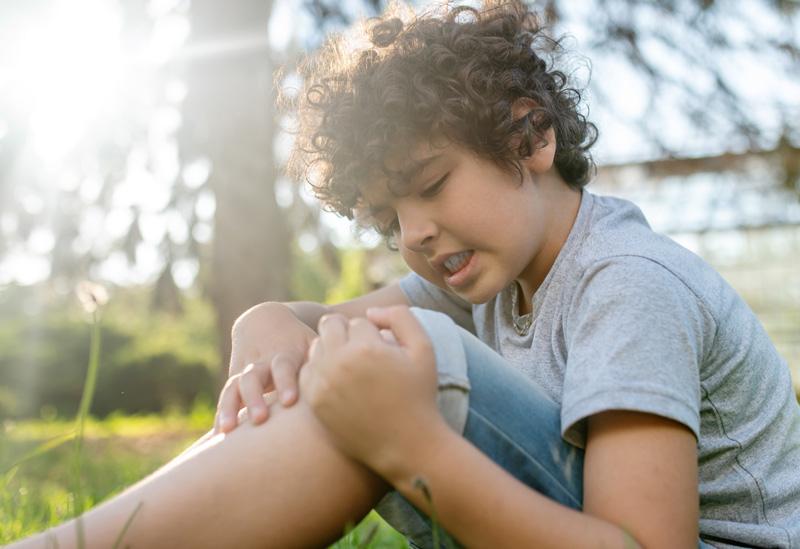
Why does the kneecap dislocate?
Children can be born with dislocating kneecaps or can develop dislocating kneecaps. Similar to in adults if the kneecap sits tilted to the side or in a very shallow groove it can dislocate after a fall or injury. Hypermobility or lax joints can also contribute and some syndromes which result in muscle imbalance or weakness can also be associated with a higher risk of the kneecap becoming unstable.
How common is a childhood kneecap dislocation?
What does it feel like?
Your child may notice the kneecap shifting out of the groove, the knee may feel unstable or painful. Sometimes the kneecap dislocates as the knee is bent and occasionally it can get stuck and remain permanently dislocated. The knee may swell or your child may be apprehensive of playing sports or changing direction.
What investigations are needed?
A radiograph or X-ray is usually performed to make sure the kneecap is reduced and back in the groove. An MRI scan can also give information on the shape of the groove and risk of further dislocation.


What is the treatment?
For a first time dislocation pain relief, a knee brace to help with pain and physiotherapy to strengthen the muscles are all that is needed. The aim would be to return to sports after 6 weeks or longer depending on physiotherapy outcomes.
If the kneecap has dislocated more than 4 times then surgery may be needed or if the kneecap has become permanently dislocated.
In children as the bones are still growing, surgery focuses on the ligaments aiming to correct the forces on the kneecap. Any form of surgery on the bones such as trochleoplasty is best left until they have stopped growing and can be more complex.
More information can be found here:
https://eor.bioscientifica.com/view/journals/eor/1/5/2058-5241.1.000018.xml
